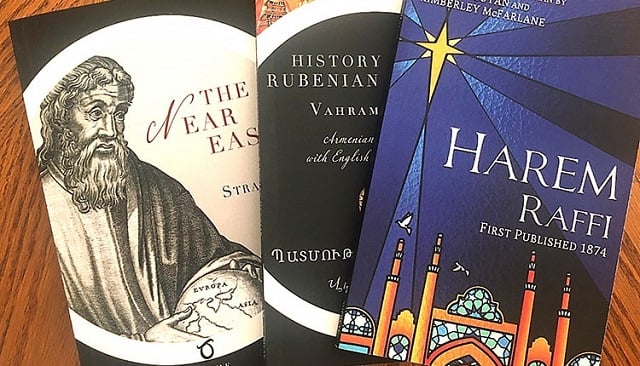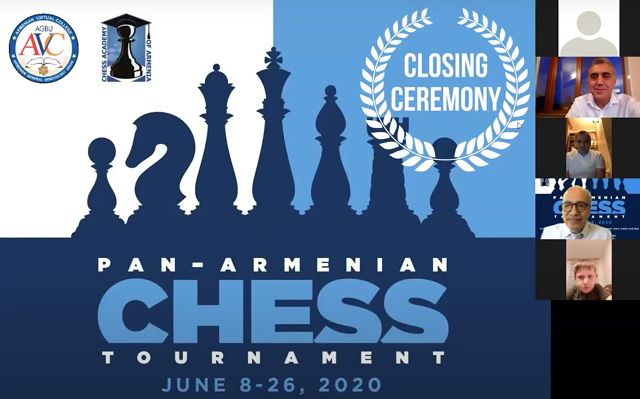BY DR. MINAS KOJAYAN
“That which I gave to others returned sweeter.”
—Vahan Tekeyan(Poet)
A seasoned teacher’s life is full of pleasant surprises, which, to the extent that they proceed from his imparted instruction—what [he] gave to others, in Vahan Tekeyan’s words—return sweeter, and stronger, to rest in his soul eternally.
Read also
A phone call recently took me back 15 years to the 11th grade class at AGBU Manoogian-Demirdjian School, on an 11-day field trip and pilgrimage to Armenia. Behind a pair of glasses stood an interesting and inquisitive student named Beyon. Happily, and sometimes indulgently, I would answer his questions. He graduated the following year and I heard no more about him, except when I would visit his honorable grandparents, Mr. and Mrs. Noubar and Marie Agopian. That was how I found out that he had travelled to Australia to pursue a PhD in psychology. Good news, certainly.
The caller was Beyon Miloyan. Without delay, he explained that he had joyfully devoted himself to translating Armenian literature to English. Could a teacher—in this case, my wife and I—have received better news?
He spoke proudly about how he and his friend and former colleague, Dr. Kimberley McFarlane, had translated Raffi’s works, Jalaleddin, Harem, and Arable Land, and were enthusiastically determined to enrich the libraries of English readers with many more translations to come.
“My heart would ache,” said Beyon, “that the current generation (of Armenians and non-Armenians) knows nothing about Armenian literature, which has much to offer a broad readership.”
Beyon was right. He had felt this pain himself, far away in Australia, where he met his talented Australian colleague who also treasured good literature. Their literary tastes converged. It did not take long for them to jointly found their own publishing company, Sophene, and their subsequent translations and projects elucidate different historical periods of the Armenian tradition.
Beyon and Kimberley have dedicated themselves to this project so ardently that the latter decided to drink from the spring, so to speak, by learning Armenian with AGBU Armenian Virtual College (AGBU-AVC), founded by the accomplished Dr. Yervant Zorian.
I looked over their translations of Harem, Jalaleddin, The Fool, and Prohaeresius, and their updated editions of Charles Neumann’s 1831 translation of Vahram Rabuni’s History of the Rubenian Dynasty and The Near East, which includes various excerpts on historic Armenia from Strabo’s important 1st century historical work, Geographica.
“Nothing beats the original. We prefer that Armenians and those who can read Armenian to have the original text, which is why we republish these alongside our translations. Unfortunately, diaspora Armenians, especially the current generation, do not know about our rich Armenian literary heritage, and besides that, are not very interested. By translating these works, we hope to make them available to those Armenians who do not read the language, but appreciate the aesthetics of our culture and want to learn about our heritage, as well as to non-Armenians who have a love for classic literature.”
Translating Armenian literature into foreign languages is an important initiative in the dissemination of Armenian culture. Let us turn back for a moment to the 5th century and imagine what would have happened if Mesrop Mashtots, Sahak Partev (*), and their pupils had not translated key works from Greek and Assyrian into Armenian, beginning with the Holy Gospels. Literature, as an important form of communication between peoples, civilizations, and epochs, brings itself palpably to the service of mutual understanding, friendship, and coexistence.
It is in this faith and knowledge that Beyon said to me:
“For over 100 years, people praise the literature of other nations (Russian, French, Indian, Nigerian, and so on…), because they enjoy them and take them to heart. Armenian literature one day may reach such lofty heights. Why not, if we Armenians can succeed in bringing our literature to light?”
Link: www.sophenearmeniaca.com
(*) Mashtots is the inventor of the Armenian alphabet circa 414, and Sahak Partev was the supreme head (Catholicos) of the Armenian Church. The whole project was sponsored by King Vramshapuh of Armenia.




























































